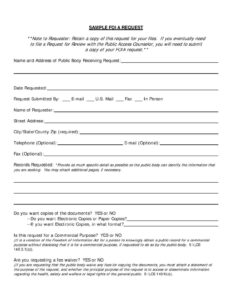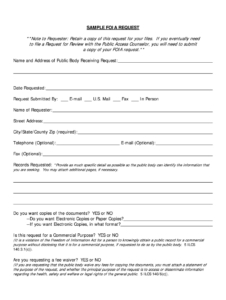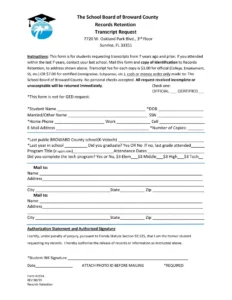Leveraging a pre-designed structure for information requests offers significant advantages. It increases the likelihood of a timely response by ensuring requests are easily understood and processed by government agencies. Standardized forms help requesters avoid common pitfalls that might lead to delays or rejections, such as omitting required information. Additionally, using templates can empower individuals by simplifying a potentially complex legal process, making government information more accessible.
This enhanced accessibility empowers citizens to hold government agencies accountable and participate more actively in democratic processes. The subsequent sections will delve into the specifics of crafting effective information requests, exploring best practices, potential challenges, and available resources.
Key Components of a Freedom of Information Act Request Template
Effective requests for government information necessitate specific components to ensure clarity, completeness, and compliance with legal frameworks. The following elements are typically included within a standardized Freedom of Information Act request template:
1. Requester Information: Clear identification of the individual or organization making the request is crucial. This typically includes full name, mailing address, email address, and telephone number. Accurate contact information ensures prompt delivery of responses and facilitates communication regarding the request.
2. Agency Identification: Precisely specifying the government agency holding the desired information is essential for efficient routing and processing. Incorrectly identifying the agency can lead to significant delays.
3. Description of Requested Records: A detailed and unambiguous description of the specific records sought is paramount. Vague or overly broad requests can hinder the agency’s ability to locate and provide the relevant information. Specific dates, titles, document types, or keywords relating to the information should be included.
4. Preferred Format: Specifying the preferred format for receiving the information (e.g., electronic copy, paper copy) helps streamline the delivery process and ensures compatibility with the requester’s systems.
5. Fee Waiver Request (Optional): If applicable, a justification for a fee waiver can be included. Specific criteria for fee waivers exist and should be consulted prior to making such a request.
6. Date: Including the date of the request establishes a clear timeline for processing and response.
7. Signature: While not always mandatory, a signature can add weight to the request and confirm the requester’s identity.
Careful attention to these components facilitates efficient processing and increases the likelihood of a successful outcome when requesting information from government agencies. A well-crafted request ensures transparency and accountability within government operations.
How to Create a Freedom of Information Act Request Template
Creating a standardized template for Freedom of Information Act (FOIA) requests promotes efficiency and consistency. This structured approach ensures comprehensive requests, increasing the likelihood of successful information retrieval from government agencies. The following steps outline the process of developing such a template.
1: Establish Clear Objectives: Define the specific types of information typically requested. Understanding common information needs helps tailor the template to specific requirements.
2: Incorporate Required Fields: Include essential fields for requester information (name, address, contact details), agency identification, detailed description of the requested records, preferred format for receiving information, and an optional section for fee waiver justifications. A date and signature line can also be included.
3: Ensure Clarity and Conciseness: Employ clear and concise language within the template’s instructions and field labels. Ambiguity can hinder proper completion and processing.
4: Provide Guidance and Instructions: Offer concise, yet comprehensive instructions on completing each section of the template. Clear guidance ensures accurate and complete requests.
5: Ensure Accessibility: Make the template accessible in various formats (e.g., printable document, online form). Broad accessibility accommodates diverse needs and preferences.
6: Test and Refine: Pilot test the template with users to identify areas for improvement. Feedback helps optimize usability and effectiveness.
7: Regularly Review and Update: Periodically review and update the template to reflect changes in legislation, agency procedures, or information needs. Regular maintenance ensures continued relevance and compliance.
A well-designed template simplifies the process of requesting information under the FOIA, promoting transparency and accountability within government operations. Careful consideration of these elements contributes to efficient information access for all stakeholders.
Standardized forms for requesting information under access to information laws, such as the Freedom of Information Act, represent a crucial tool for promoting transparency and accountability in government operations. Utilizing a template ensures requests are comprehensive, compliant, and easily processed, increasing the likelihood of timely and successful information retrieval. Clear identification of the requester and agency, precise descriptions of the sought-after records, and specified delivery preferences contribute to a streamlined process. Furthermore, templates empower individuals by demystifying a potentially complex legal process, fostering greater public engagement in democratic processes.
Access to government information is a cornerstone of an informed citizenry and a functioning democracy. By simplifying the request process, standardized templates contribute significantly to open government initiatives. These tools empower individuals to hold institutions accountable, participate actively in civic life, and promote a more transparent and participatory governance model. Continued refinement and widespread adoption of such resources are essential for upholding these fundamental principles.


